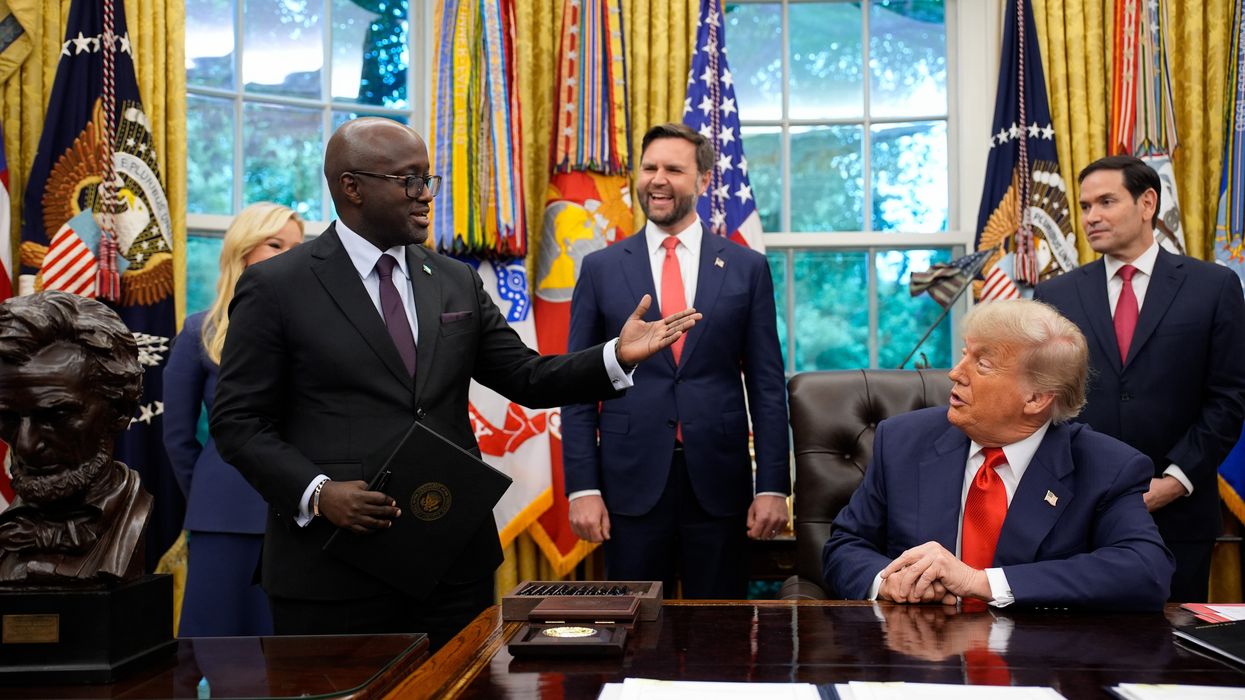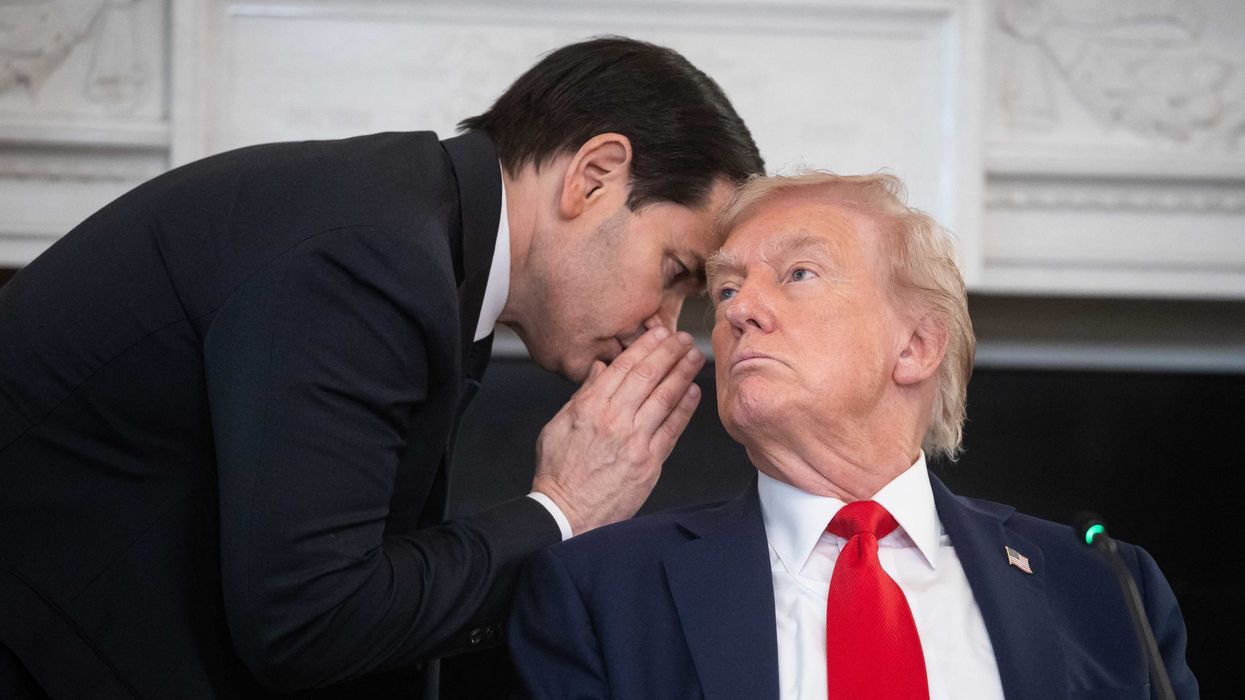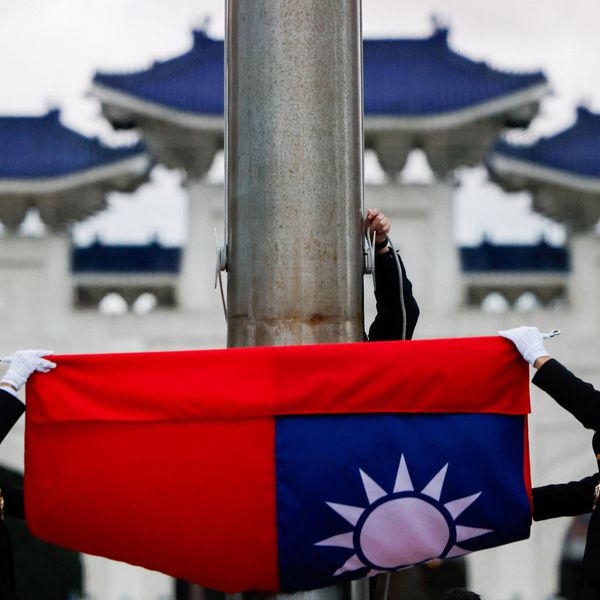The Quad’s first in-person summit concluded on Friday with a joint statement that stressed cooperation on space, semiconductors, and infrastructure along with supply chains, health, cybersecurity, and climate change. The summit added modestly to the leaders’ virtual meeting in March, when several initiatives were announced. But what many expected to be the centerpiece of Washington’s Asia strategy had already been upstaged by a bolt-from-the blue announcement during the previous week of AUKUS, a new alliance between Anglosphere nations the United States, United Kingdom, and Australia.
AUKUS is unabashedly a military pact, with its program of building nuclear submarines, expanding U.S. troop presence, and deep collaboration on defense technologies. But AUKUS and the Quad are two related faces of a common agenda of countering China through formation of overlapping blocs with strong security components. Militarized bloc formation, even if informal, is a destabilizing development in Asia. But unlike its more provocative cousin AUKUS, the Quad still has a narrow path to emerge as a constructive force if it demilitarizes, walks its talk of inclusivity, and delivers on at least some of its public goods promises.
An Underwhelming Record
Four years after its revival (a time frame about half the life of China’s Belt and Road Initiative), the Quad has little to show despite all its public goods talk. As yet, it cannot point to a single major completed project with a “Made in Quad” signature. In its two summits, the Quad has stressed non-traditional security — health, critical technologies, infrastructure, cyber, climate change, and others, along with invocations of “freedom of navigation” and the “rule of law.” The recent summit also focused on skills training and satellite data sharing for natural disasters — both important action areas in the region.
Health security had the potential to be different from the otherwise uninspiring performance record. Leveraging India’s major domestic capacity for vaccine production (more than half of the world’s total), the Quad countries committed to delivering vaccines to mainly Southeast Asia during its March summit. India’s massive Delta variant spike this past spring and summer delayed those plans. The latest target is a billion new doses by the end of 2022, to be manufactured in India with financial support from other Quad members.
Bloc by Stealth
Ironically, the one arena in which the Quad has delivered is what it dares not acknowledge as its own — hard security. Under the rubric of the Malabar exercise, the Quad nations are steadily building deep military interoperability and conducting more sophisticated war-fighting exercises, most notably anti-submarine warfare.
Malabar began originally as a bilateral U.S.-India exercise, to which Japan was later added on a permanent basis. The inclusion of Australia in 2020 however made Malabar’s membership congruent with the Quad. The United States and India have denied that hard security is a part of the Quad agenda. But such verbal gymnastics fool no one when precisely the same four nations constitute Malabar and associated activities. The military bloc-like behavior of the Quad is destabilizing to the regional order, especially in the context of AUKUS, and lends credence to China’s accusation of a U.S.-led gameplan of armed encirclement.
The Quad also has attempted to draw other regional countries into its fold, especially Southeast Asian states. With their more benign view of China’s rise, Southeast Asia (as also South Korea and New Zealand) has resisted being drawn into U.S.-led strategies that are increasingly looking more like containment than balancing.
India as Dissenter?
India is an anomalous Quad member in that it is not a U.S. treaty ally. Its limited state capacity makes it a potential “weak link” in the grouping. But Washington sees major value in India’s membership. The United States, beholden to its project of liberal primacy, would like to present its rivalry with China as a global contest rather than a self-centered competition for global dominance. The inclusion of India, long seen as a leader of the Global South, adds credibility to Washington’s claims of a universal struggle for the soul of Civilization. The idea of American exceptionalism, though not explicitly articulated in our times, remains central to the thinking of many key Biden advisors.
However, in wake of AUKUS, a degree of uneasiness is apparent among influential voices in New Delhi, also demonstrated by India’s caution on security cooperation at the recent summit. India has not criticized AUKUS directly, but its strong verbal disassociation from the military pact is notable.
India has reasons to be concerned at the turn Washington’s grand strategy is taking. For instance, despite Washington’s repeated urging to be a “net security provider,” New Delhi can ill-afford sailing off into distant oceans when its long land border is so vulnerable to two-front warfare with China and Pakistan. India may ultimately realize that participating in militarized bloc formation with Washington makes it more, not less, vulnerable to Chinese pressure.
Retooling the Quad
If the Quad simply becomes a subaltern to a U.S.-led grand strategy of militarized China-containment, it will only accelerate the dynamic of confrontation in Asia. To act as a stabilizing force instead, the Quad must embrace three prescriptions — demilitarization, inclusion, and delivery.
The first and most crucial task is to demilitarize the Quad, as a part of a broader push for regional stability, as advocated by previous Quincy Institute briefs. Forming multinational military blocs, rather than sticking to bilateral defense partnerships, is provocative and prone to be perceived with some justification by China as a strategy of encirclement. The four-nation Malabar exercise is the riskiest element and strongest indication of the Quad’s journey toward a de facto military bloc. Malabar therefore must be returned to its original bilateral U.S.-India format.
Second, demilitarization by itself will be insufficient if not accompanied by an attempt to be genuinely inclusive. Objective observers cannot fail to notice that the Quad’s high-decibel talk of inclusivity conspicuously excludes China. This is unsurprising, as the Quad was formed precisely to counter Beijing. But solutions to the region’s biggest security threats — health, climate change, poverty — require all hands on the deck. Problems are unlikely to lead to satisfactory solutions, unless China, the giant in the region but not currently in the room, is also a part of the dialogue.
For all its rhetoric of “ASEAN centrality,” the Quad’s engagement with ASEAN is weak. ASEAN in turn views the Quad warily, seeing it as an attempt to erode what has been the most successful integration and stability project outside Europe. It would be shameful if Washington attempted to play off ASEAN members against each other based on their attitudes toward Beijing. Rather, the Quad states should include ASEAN as a full partner in their public goods initiatives.
Finally, the Quad will need to deliver on real projects that improve the lives of real people — and fast —if it is to be taken seriously in Asia. Currently, it aims to take on far too many issues. The Quad might wish to restrict itself to a smaller set of inter-linked arenas of health, supply chain resilience, sustainable infrastructure, and climate adaptation.
Financing is the elephant in the room, further complicated by the fact that key Quad member India is itself in need of major infrastructure and other investments. But as the Great Recession and the pandemic crisis demonstrated, wealthy nations can mobilize very large pools of money when the chips are down. Proposals to mobilize the needed financing, especially in sustainable infrastructure, ought to be evaluated and acted upon. The Quad should also consider partnering with the China-led Asian Infrastructure Investment Bank, of which India and Australia are major shareholders.
Competition and Cooperation, Not Confrontation
Naturally, a degree of competition is inevitable between the Quad and China. But if this competition generates positive-sum returns to the region it can bolster individual Quad members’ standing and influence and strengthen regional stability at the same time.
A retooled Quad will not resolve all of Asia’s security challenges. But it can help arrest the current trajectory toward confrontation. There’s a good reason why most Southeast Asian states, no allies of China, are emphasizing both interdependence and bilateral security responses rather than joining exclusive military blocs against their giant neighbor. Washington could benefit by listening to them more.
















